
Colosseo: The Heartbeat of Ancient Rome
Discover Colosseo, where the ancient history of Rome comes to life amidst vibrant modern culture. A must-visit for history enthusiasts and culture lovers alike.
Welcome to Colosseo, the iconic neighborhood that houses the world-famous Colosseum, a symbol of the enduring spirit of ancient Rome. This area, rich in history and cultural significance, offers an unforgettable journey through time. As you walk through the cobblestone streets, you will be surrounded by remnants of the Roman Empire, each with its own story to tell. Start your adventure at the Colosseum, the largest ancient amphitheater ever built. Imagine the roaring crowds as gladiators fought for glory. Next, explore the Roman Forum, once the center of public life. Here, you can see the ruins of important government buildings and temples. Don't miss the Arch of Constantine, a monumental arch that commemorates Constantine’s victory at the Battle of Milvian Bridge. Beyond the ancient ruins, Colosseo is also home to charming cafes, traditional trattorias, and vibrant street life. Enjoy a coffee while admiring the stunning architecture or indulge in authentic Roman cuisine. The neighborhood's blend of past and present offers a unique and enriching experience for every visitor.
Local tips in Colosseo
- Arrive early at the Colosseum to avoid long lines and crowds.
- Wear comfortable shoes as the ancient cobblestones can be uneven.
- Consider joining a guided tour for deeper insights into the history of the area.
- Visit the Roman Forum and Palatine Hill with a combined ticket for a comprehensive experience.
- Stay hydrated and carry a water bottle, especially during the summer months.
Colosseo: The Heartbeat of Ancient Rome
Welcome to Colosseo, the iconic neighborhood that houses the world-famous Colosseum, a symbol of the enduring spirit of ancient Rome. This area, rich in history and cultural significance, offers an unforgettable journey through time. As you walk through the cobblestone streets, you will be surrounded by remnants of the Roman Empire, each with its own story to tell. Start your adventure at the Colosseum, the largest ancient amphitheater ever built. Imagine the roaring crowds as gladiators fought for glory. Next, explore the Roman Forum, once the center of public life. Here, you can see the ruins of important government buildings and temples. Don't miss the Arch of Constantine, a monumental arch that commemorates Constantine’s victory at the Battle of Milvian Bridge. Beyond the ancient ruins, Colosseo is also home to charming cafes, traditional trattorias, and vibrant street life. Enjoy a coffee while admiring the stunning architecture or indulge in authentic Roman cuisine. The neighborhood's blend of past and present offers a unique and enriching experience for every visitor.
Iconic landmarks you can’t miss
Parco archeologico del Colosseo
Explore the ancient heart of Rome at Parco archeologico del Colosseo, where history and architecture converge in a breathtaking archaeological museum.
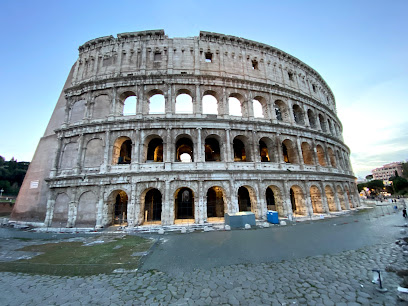
Case Romane del Celio
Discover the ancient Roman heritage at Case Romane del Celio, a hidden gem with stunning frescoes and rich history in the heart of Rome.
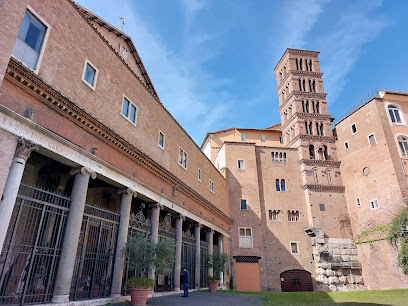
Base of the Statue of Nero
Visit the Base of the Statue of Nero, a remarkable historical landmark in Rome, and immerse yourself in the grandeur of ancient Roman history.
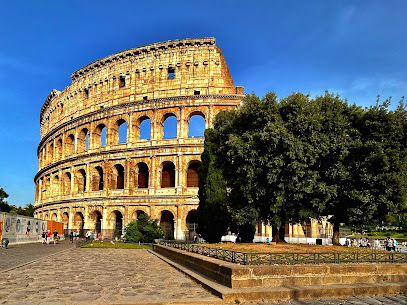
Largo Romolo e Remo
Discover Largo Romolo e Remo, a tranquil historical landmark in Rome, perfect for relaxation and a taste of local culture amidst the city's vibrancy.
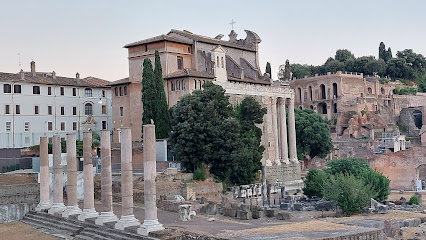
colosseum
Explore the Colosseum, Rome's iconic symbol of ancient history, where gladiators once fought and emperors reigned.
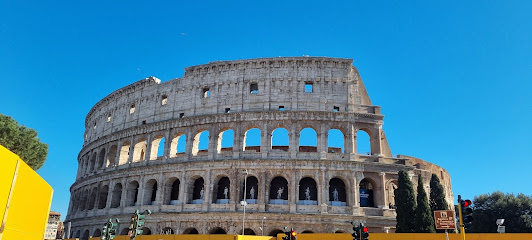
Colosseo view point
Discover stunning views of the Colosseum at the Colosseo Viewpoint, a historical landmark capturing the essence of Rome's rich heritage and architectural beauty.
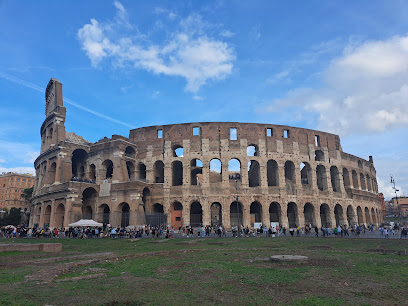
Monument of Alfredo Oriani
Discover the Monument of Alfredo Oriani in Rome, a stunning tribute to Italian literature and culture amidst the city's historical charm.
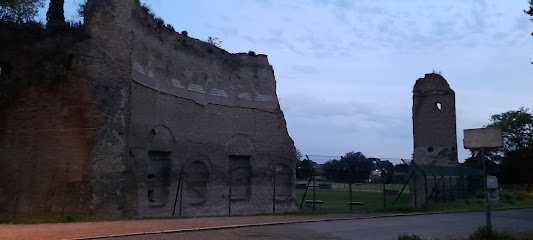
Koloseum
Discover the grandeur of the Koloseum, an ancient amphitheater that embodies the timeless spirit of Rome's rich history and architectural brilliance.
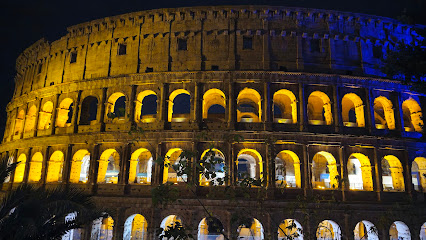
Colosseum
Explore the Colosseum, Rome's monumental arena where ancient gladiators once battled, a marvel of architecture and history that captivates every visitor.
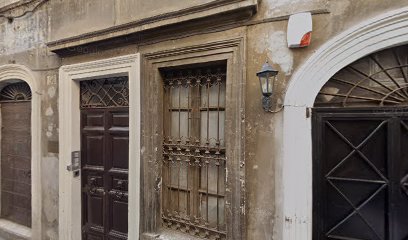
Piazza del Colosseo
Discover the enchanting beauty of Piazza del Colosseo, an iconic town square in Rome that blends ancient history with vibrant culture.

The coliseum
Discover the grandeur of the Coliseum, an iconic historical landmark in Rome that showcases ancient Roman architecture and culture.
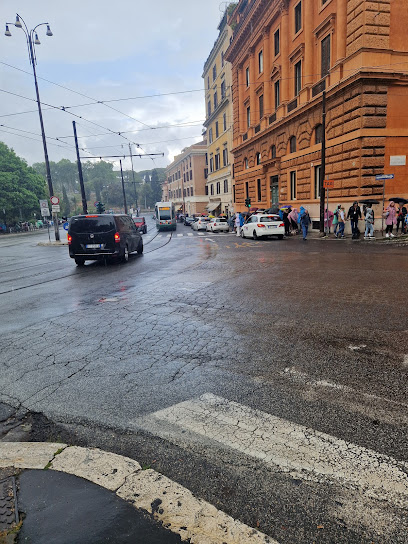
Unmissable attractions to see
Palatine Hill
Explore the ancient splendor of Palatine Hill, where Rome's storied past meets breathtaking views and lush gardens.
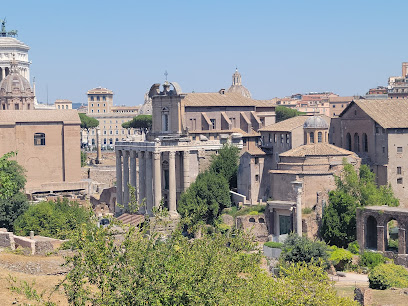
Arch of Constantine
Discover the Arch of Constantine, a stunning triumphal arch in Rome, celebrating ancient history and architectural brilliance.

Parco del Colle Oppio
Explore the lush landscapes and historical allure of Parco del Colle Oppio, a serene escape in the heart of Rome with stunning views of the Colosseum.
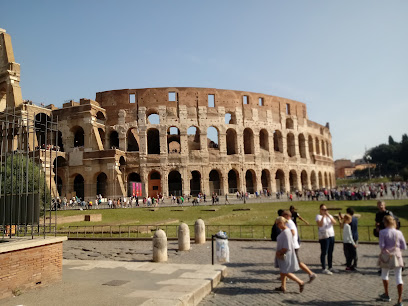
Parco archeologico del Colosseo
Discover the historical treasures of Parco Archeologico del Colosseo, a remarkable journey through ancient Rome's most iconic landmarks.

Base of the Statue of Nero
Discover the historical marvel of the Base of the Statue of Nero, a captivating glimpse into Rome's imperial past amidst the city's vibrant atmosphere.
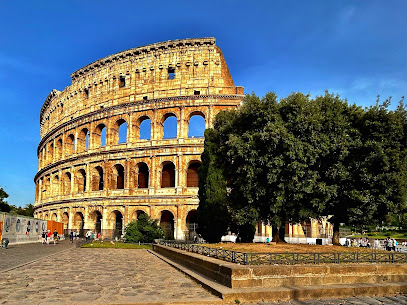
Largo Romolo e Remo
Discover the charm of Largo Romolo e Remo, a historical landmark in Rome that offers a glimpse into the city’s rich cultural heritage amidst stunning architecture.
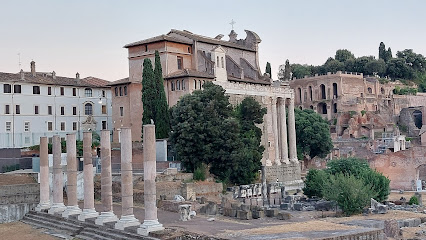
Arches Severiane on the Palatine
Explore the Arches Severiane on Palatine Hill, a stunning example of ancient Roman architecture and history in the heart of Rome.
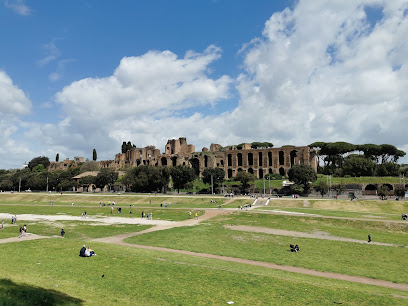
colosseum
Discover the awe-inspiring Colosseum in Rome, an ancient amphitheater where history comes alive amidst breathtaking architecture.
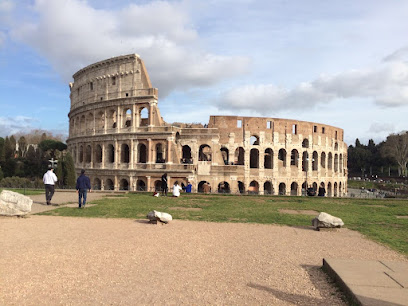
Statua dell'antica Roma
Experience the enchanting Statua dell'antica Roma, a captivating symbol of the city's ancient heritage and artistic brilliance.
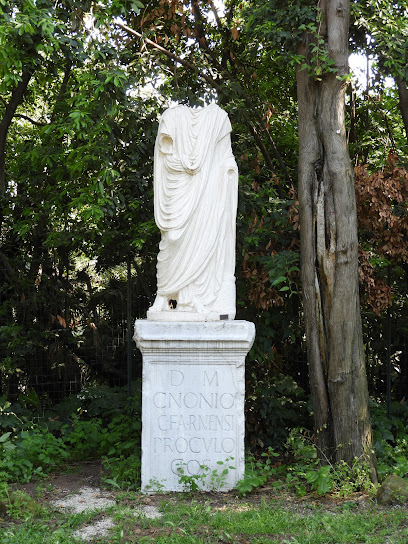
Tourist Point
Explore the rich history and vibrant culture of Rome at Tourist Point, a must-visit attraction for every traveler seeking authentic Italian experiences.
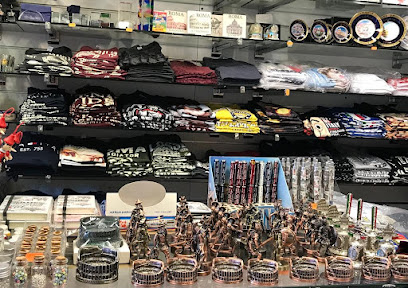
Essential places to dine
RoYaL Art Cafè
Discover RoYaL Art Cafè - where exquisite Italian cuisine meets artistic ambiance near Rome's historic Colosseum.
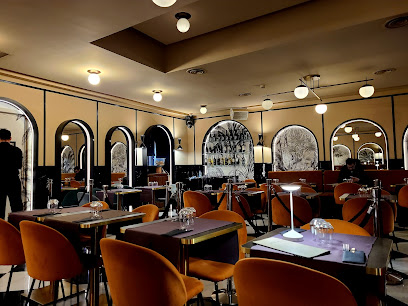
Ristoro Della Salute
Experience authentic Italian cuisine at Ristoro Della Salute, just steps from Rome's Colosseum - where tradition meets inclusivity.
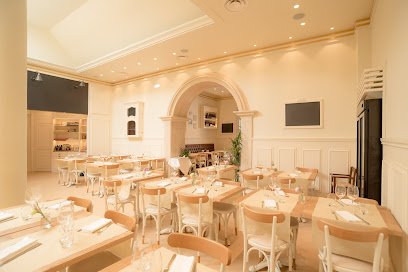
Pasqualino Al Colosseo srl
Discover authentic Italian cuisine at Pasqualino Al Colosseo, where every dish tells a story against the backdrop of Rome's historic landmarks.

Hostaria Al Gladiatore
Experience authentic Italian dining at Hostaria Al Gladiatore near Rome's iconic Colosseum - where tradition meets flavor.
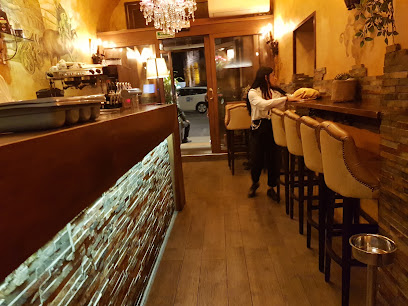
Ristorante Caffè Martini & Rossi
Experience exquisite Italian cuisine at Ristorante Caffè Martini & Rossi with stunning views of the Colosseum in Rome.
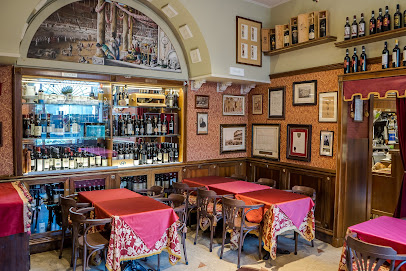
Osteria Angelino dal 1899
Experience authentic Roman cuisine at Osteria Angelino dal 1899 - where tradition meets flavor in every dish.
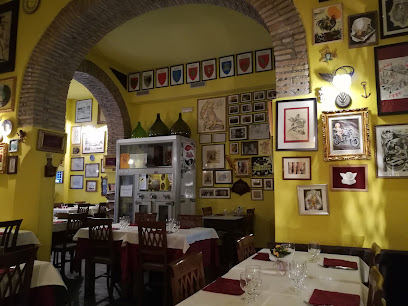
Contrario. Vineria con Cucina.
Discover Contrario: A top Italian dining destination in Rome offering innovative dishes and an extensive wine selection.

Aroma
Experience fine dining at Aroma, where exquisite Italian cuisine meets stunning views of the Colosseum in the heart of Rome.
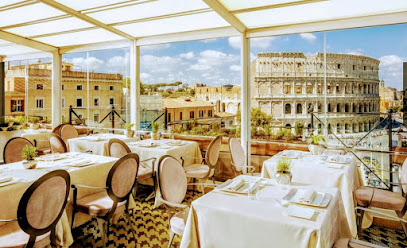
Hostaria da Nerone
Experience the essence of Rome at Hostaria da Nerone with authentic dishes that celebrate Italy's rich culinary heritage.
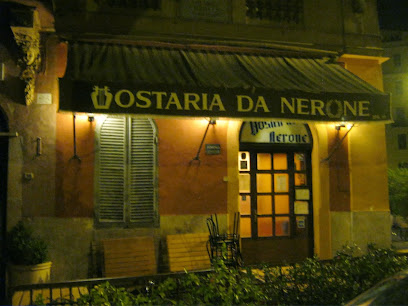
Il Salotto del Colosseo
Experience authentic Italian cuisine at Il Salotto del Colosseo, where every dish tells a story amidst stunning views near Rome's historic landmark.
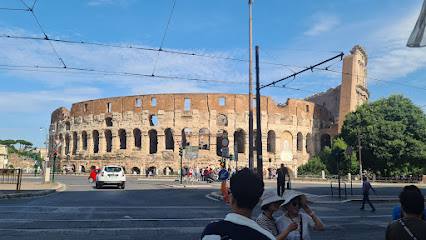
Markets, malls and hidden boutiques
Murano Max Murano Glass Rome
Explore the enchanting world of Murano glass at Murano Max in Rome, where craftsmanship meets elegance in every unique piece.
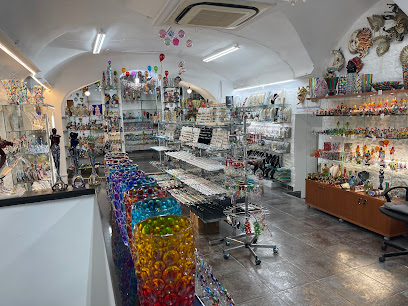
Pifebo Vintage Shop
Explore Pifebo Vintage Shop in Rome for unique vintage clothing and accessories, where every piece tells a story of timeless fashion.
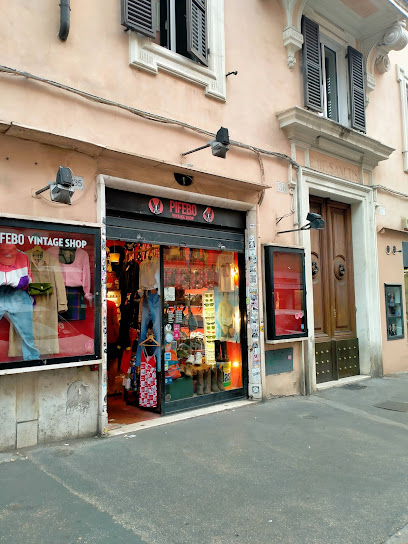
Blue Goose
Explore Blue Goose, a vintage clothing haven in Rome, offering unique pieces that celebrate timeless fashion and rich history.
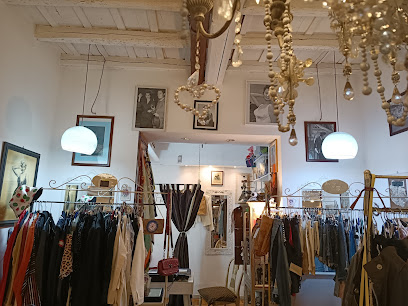
King Size Vintage
Explore King Size Vintage in Rome for unique, retro fashion pieces that tell a story and express your individual style in the heart of the city.
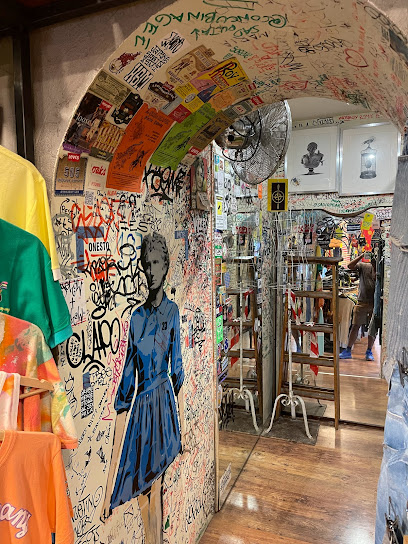
Souvenir Roma
Discover unique gifts and handcrafted souvenirs at Souvenir Roma, capturing the charm of Italy in every piece.
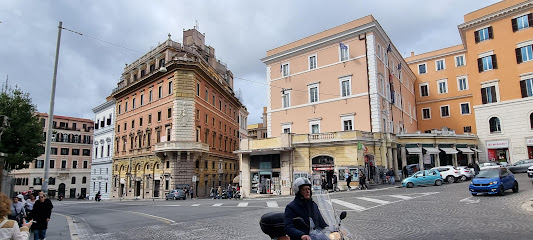
Kokoro
Explore Kokoro, a chic women's clothing boutique in Rome, showcasing unique styles and quality fashion for every occasion.
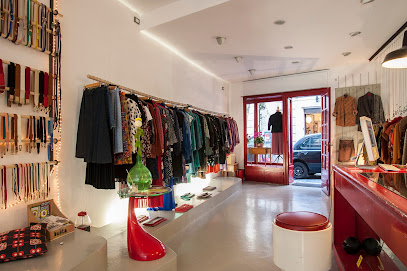
SUFIR
Explore SUFIR, a premier leather goods store in Rome, where exquisite craftsmanship meets timeless style in handbags and dresses.
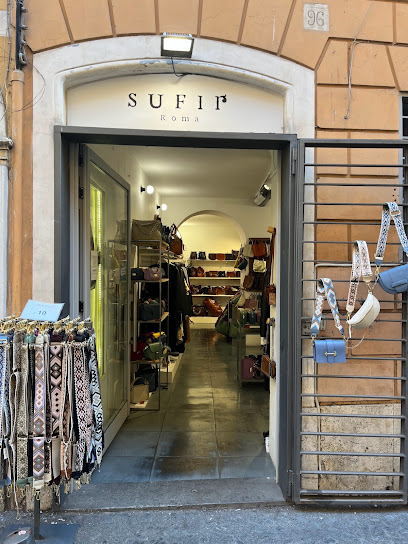
Boutique dei Serpenti - Borse e Bijoux Roma
Explore Boutique dei Serpenti in Rome for exquisite Italian handbags and jewelry, showcasing unique craftsmanship and timeless style.
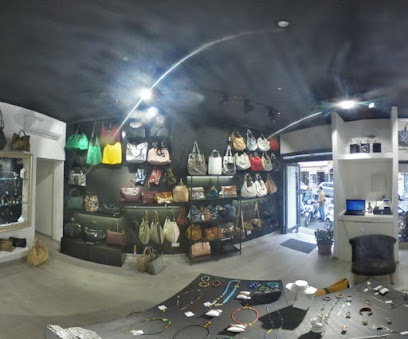
Artisanal Cornucopia
Discover unique artisanal fashion at Artisanal Cornucopia, a must-visit clothing store in the heart of Rome, blending style with local craftsmanship.
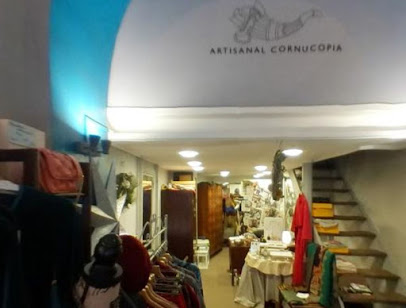
Giocattoli-Souvenir
Explore the exquisite world of Giocattoli/Souvenir in Rome, where unique gifts and charming toys bring the spirit of Italy to life.
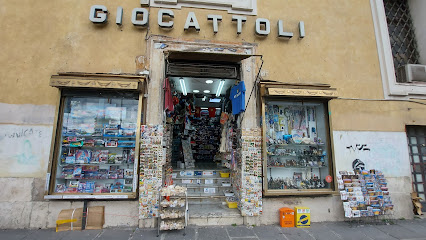
Essential bars & hidden hideouts
RoYaL Art Cafè
Discover a perfect blend of art and Italian cuisine at RoYaL Art Cafè, located near the historic Colosseum in Rome, Italy.
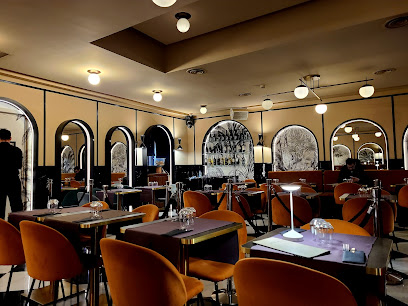
Oppio Caffè
Experience the authentic taste of Italy at Oppio Caffè, a delightful café in Rome offering exquisite dishes, refreshing cocktails, and a vibrant atmosphere.
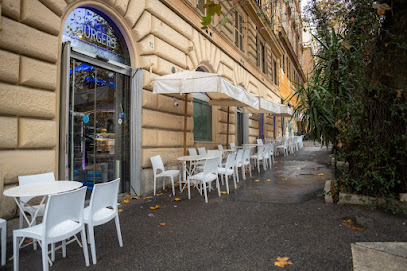
Shamrock
Experience the charm of an Irish pub in Rome, where delicious food, refreshing drinks, and a lively atmosphere await you near the Colosseum.
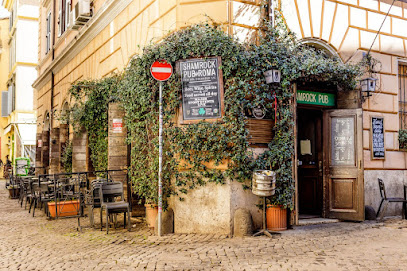
Coming Out
Discover the vibrant atmosphere of Coming Out, a renowned gay bar and restaurant in Rome, where inclusivity and nightlife come together.
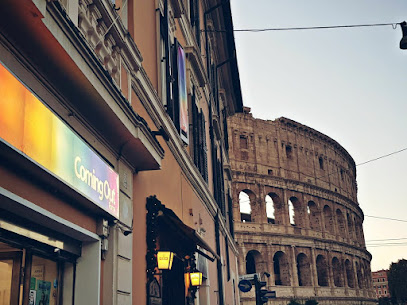
Ristorante Caffè Martini & Rossi
Experience the vibrant culinary scene at Ristorante Caffè Martini & Rossi, a must-visit restaurant in Rome near the Colosseum.
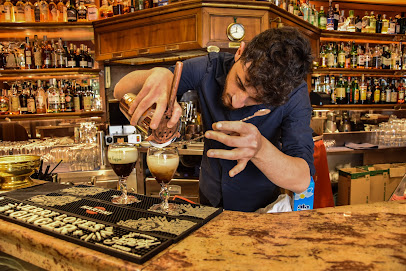
The Race Club
Experience the vibrant nightlife of Rome at The Race Club, a stylish cocktail bar renowned for its innovative drinks and electrifying atmosphere.
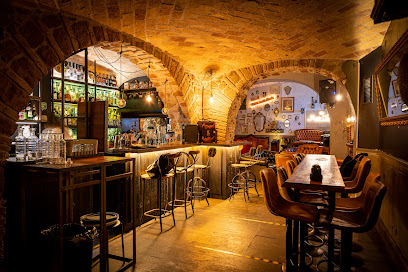
Colosseum Bar
Discover Colosseum Bar, where Rome's vibrant cocktail and coffee culture come alive in a stylish setting, perfect for tourists seeking local flavors.
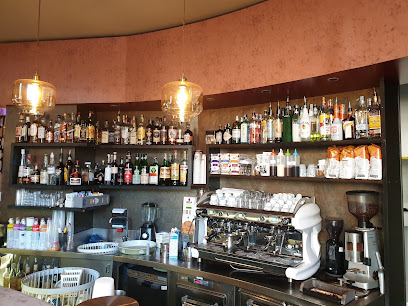
The Court Bar. Palazzo Manfredi
Experience the elegance of The Court Bar in Rome, where exquisite cocktails meet stunning views of the Colosseum.
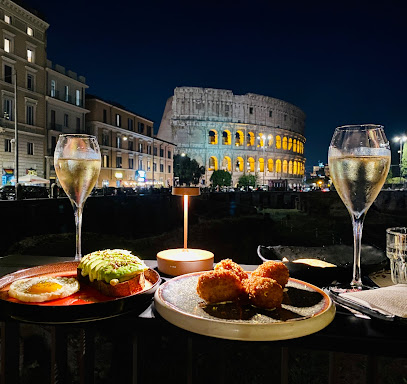
Caffè Roma
Experience the charm of Caffè Roma - a cozy coffee shop near the Colosseum, perfect for a delightful break in Rome.
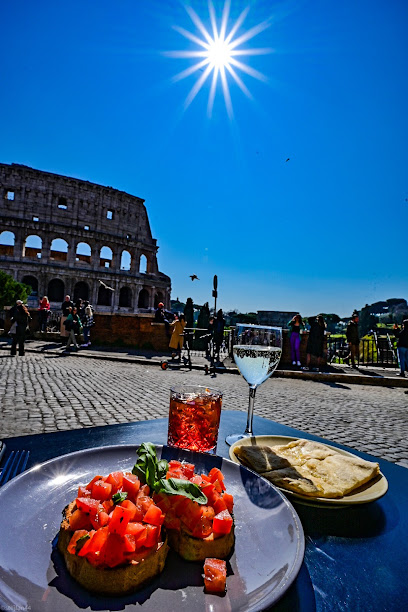
Enoteca Colosseo
Experience the finest Italian wines at Enoteca Colosseo, a charming wine bar in the heart of Rome, blending culture, flavor, and ambiance.
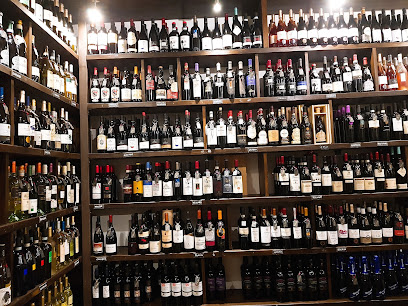
Local Phrases
-
- HelloCiao
[chow] - GoodbyeArrivederci
[ah-ree-veh-dehr-chee] - YesSì
[see] - NoNo
[noh] - Please/You're welcomePer favore/Prego
[pehr fah-voh-reh/preh-goh] - Thank youGrazie
[grah-tsee-eh] - Excuse me/SorryScusa/Mi dispiace
[skoo-sah/mee dee-spyah-cheh] - How are you?Come stai?
[koh-meh stai] - Fine. And you?Bene. E tu?
[beh-neh. eh too] - Do you speak English?Parli inglese?
[pahr-lee een-gleh-zeh] - I don't understandNon capisco
[nohn kah-pee-skoh]
- HelloCiao
-
- I'd like to see the menu, pleaseVorrei vedere il menu, per favore
[vor-ray veh-deh-reh eel meh-noo, pehr fah-voh-reh] - I don't eat meatNon mangio carne
[nohn mahn-joh kahr-neh] - Cheers!Salute!
[sah-loo-teh] - I would like to pay, pleaseVorrei pagare, per favore
[vor-ray pah-gah-reh, pehr fah-voh-reh]
- I'd like to see the menu, pleaseVorrei vedere il menu, per favore
-
- Help!Aiuto!
[ah-yoo-toh] - Go away!Vattene!
[vaht-teh-neh] - Call the Police!Chiama la polizia!
[kee-ah-mah lah poh-lee-tsya] - Call a doctor!Chiama un dottore!
[kee-ah-mah oon doht-toh-reh] - I'm lostMi sono perso
[mee soh-noh pehr-soh] - I'm illSto male
[stoh mah-leh]
- Help!Aiuto!
-
- I'd like to buy...Vorrei comprare...
[vor-ray kohm-prah-reh] - I'm just lookingSto solo guardando
[stoh soh-loh gwar-dahn-doh] - How much is it?Quanto costa?
[kwahn-toh koh-stah] - That's too expensiveÈ troppo caro
[eh troh-poh kah-roh] - Can you lower the price?Puoi abbassare il prezzo?
[pwoy ahb-bahs-sah-reh eel preh-tsoh]
- I'd like to buy...Vorrei comprare...
-
- What time is it?Che ora è?
[keh oh-rah eh] - It's one o'clockÈ l'una
[eh loo-nah] - Half past (10)Sono le dieci e mezza
[soh-noh leh dyeh-chee eh meh-tzah] - MorningMattina
[maht-tee-nah] - AfternoonPomeriggio
[poh-meh-ree-joh] - EveningSera
[seh-rah] - YesterdayIeri
[yeh-ree] - TodayOggi
[oh-jee] - TomorrowDomani
[doh-mah-nee] - 1Uno
[oo-noh] - 2Due
[doo-eh] - 3Tre
[treh] - 4Quattro
[kwah-troh] - 5Cinque
[cheen-kweh] - 6Sei
[seh-ee] - 7Sette
[seht-teh] - 8Otto
[oht-toh] - 9Nove
[noh-veh] - 10Dieci
[dyeh-chee]
- What time is it?Che ora è?
-
- Where's a/the...?Dov'è...?
[doh-veh] - What's the address?Qual è l'indirizzo?
[kwahl eh leen-dee-reet-soh] - Can you show me (on the map)?Puoi mostrarmi (sulla mappa)?
[pwoy mohs-trar-mee soo-lah mahp-pah] - When's the next (bus)?Quando passa il prossimo (autobus)?
[kwahn-doh pahs-sah eel prohs-see-moh ow-toh-boo-s] - A ticket (to ....)Un biglietto (per ....)
[oon beel-yet-toh pehr]
- Where's a/the...?Dov'è...?
History of Colosseo
-
The Colosseum, also known as the Flavian Amphitheatre, was commissioned by Emperor Vespasian of the Flavian dynasty in AD 70-72. It was completed in AD 80 by his son Titus and later modified by Domitian. This monumental structure was built using travertine limestone, tuff, and brick-faced concrete, showcasing the engineering prowess of ancient Rome. It was primarily used for gladiatorial contests and public spectacles, symbolizing the grandeur of the Roman Empire.
-
The Colosseum hosted thousands of spectators who gathered to witness gladiatorial games, animal hunts, and other public events. These games were integral to Roman society and culture, reflecting the values of courage, honor, and the spectacle of life and death. The elaborate shows often served to distract the populace from political issues and were a means for emperors to gain popularity.
-
With the decline of the Roman Empire in the 5th century, the Colosseum fell into disuse and disrepair. It was repurposed for various uses, including housing, workshops, and even a fortress. However, during the Renaissance, efforts began to preserve and restore the structure as a symbol of Rome's glorious past. The Colosseum was eventually recognized as a historical monument, leading to conservation efforts that continue to this day.
-
Today, the Colosseum stands as an enduring symbol of Rome and is one of the most recognized monuments in the world. It attracts millions of visitors each year, serving as a testament to the architectural and cultural achievements of ancient Rome. The surrounding Colosseo neighborhood has developed into a vibrant area filled with cafes, shops, and cultural sites, making it a hub for both tourists and locals.
-
In recent years, the Colosseum has become a venue for various cultural events, including concerts and theatrical performances, bringing the ancient structure back to life in a modern context. The area hosts exhibitions and educational programs aimed at promoting awareness of Roman history and its impact on contemporary culture. These events enhance the cultural richness of the Colosseo neighborhood, celebrating its historical significance while making it relevant to today's society.
Colosseo Essentials
-
Colosseo is easily accessible from various neighborhoods in Rome. The Colosseum metro station (Line B) is located right next to the iconic monument, making it convenient for travelers arriving from areas like Termini, Trastevere, and the Vatican. Buses 75, 81, and 87 also serve the area, providing connections from nearby neighborhoods such as Monti and Esquilino. For those preferring a more scenic route, walking from the Roman Forum or Palatine Hill takes only about 15 minutes.
-
Colosseo is a pedestrian-friendly neighborhood, and many attractions are within walking distance. The area is well connected by public transport, including the metro and various bus routes. Bicycles can be rented through local services, and bike lanes are available, but be cautious as traffic can be heavy. Taxis and ride-sharing services are also readily available for longer distances or late-night travel.
-
Colosseo is generally safe for tourists, but standard precautions should be taken. Avoid secluded areas, especially at night, and be mindful of your belongings in crowded spots. Areas around Termini station and certain parts of the Esquilino neighborhood can have higher crime rates, particularly for pickpocketing targeting tourists. Staying vigilant and being aware of your surroundings will enhance your safety.
-
In case of an emergency, dial 112 for police, medical, or fire services. Local hospitals are available, and it is advisable to have travel insurance covering medical emergencies. For minor issues, pharmacies are widespread and can provide over-the-counter medications. Familiarize yourself with the nearest police station and hospital locations upon arrival.
-
Fashion: Do dress comfortably for walking, but avoid overly casual attire when visiting churches. Don’t wear beachwear or overly revealing clothing. Religion: Do respect religious sites, covering shoulders and knees when entering churches. Don’t take photos where prohibited. Public Transport: Do validate your metro ticket before boarding. Don’t eat or drink on public transport. Greetings: Do greet with a friendly 'Ciao' or 'Buongiorno.' Don’t be overly informal with older locals. Eating & Drinking: Do try local delicacies like pizza al taglio and gelato. Don’t leave a large tip; rounding up the bill is appreciated.
-
To experience Colosseo like a local, visit the Mercato di Campagna Amica, an open-air market offering fresh produce and artisanal products. Engage with local artisans in the Monti neighborhood for unique souvenirs. For a less touristy experience, explore the hidden alleys and small trattorias away from the main attractions, where you can savor authentic Roman cuisine. Early morning visits to the Colosseum provide a quieter experience and stunning light for photography.
Nearby Cities to Colosseo
-
Things To Do in St. Peter's Square
-
Things To Do in Apostolic Palace
-
Things To Do in Vatican Necropolis
-
Things To Do in Sistine Chapel
-
Things To Do in St. Peter's Basilica
-
Things To Do in Gregorian Etruscan Museum
-
Things To Do in Vatican Museums
-
Things To Do in Vatican Pinacoteca
-
Things To Do in Vatican Gardens
-
Things To Do in Orvieto
-
Things To Do in Assisi
-
Things To Do in Perugia
-
Things To Do in Montepulciano
-
Things To Do in Arezzo
-
Things To Do in Siena









